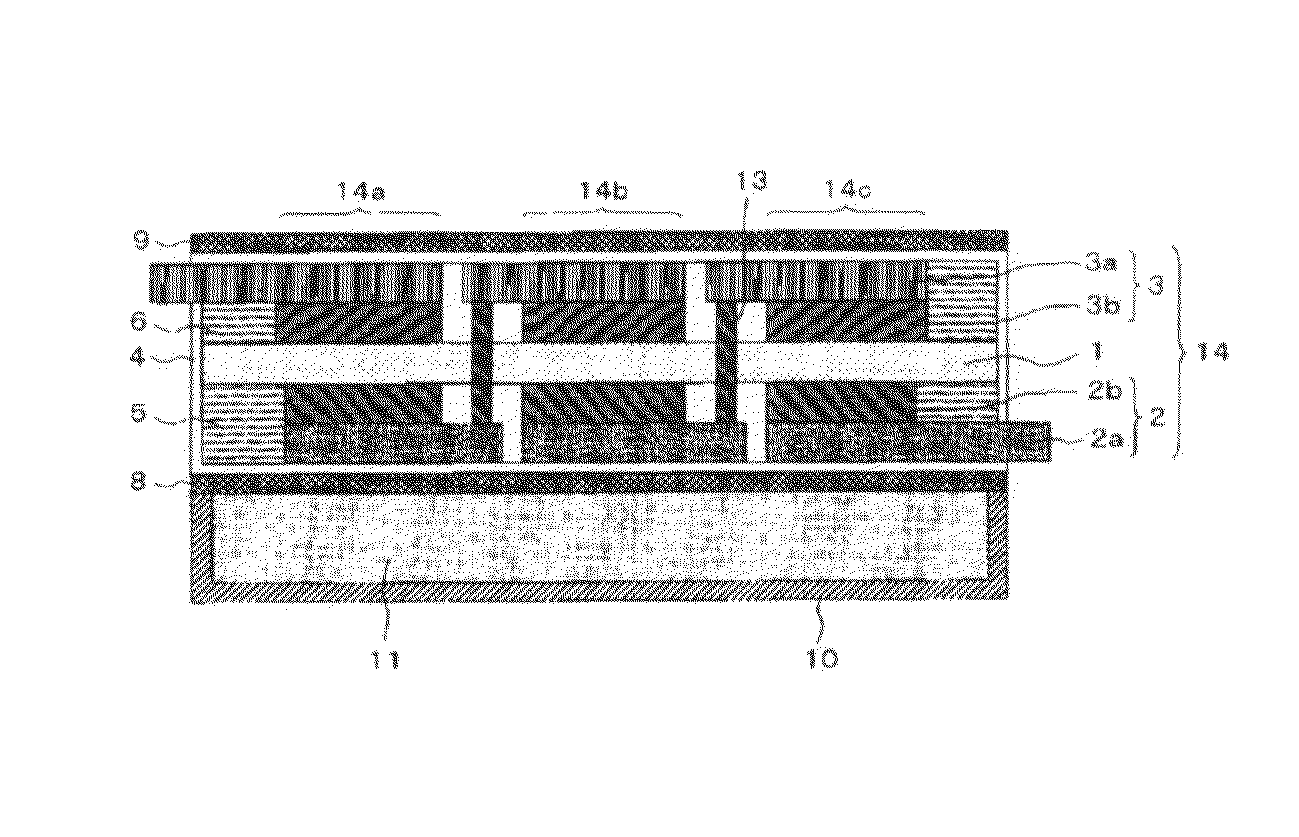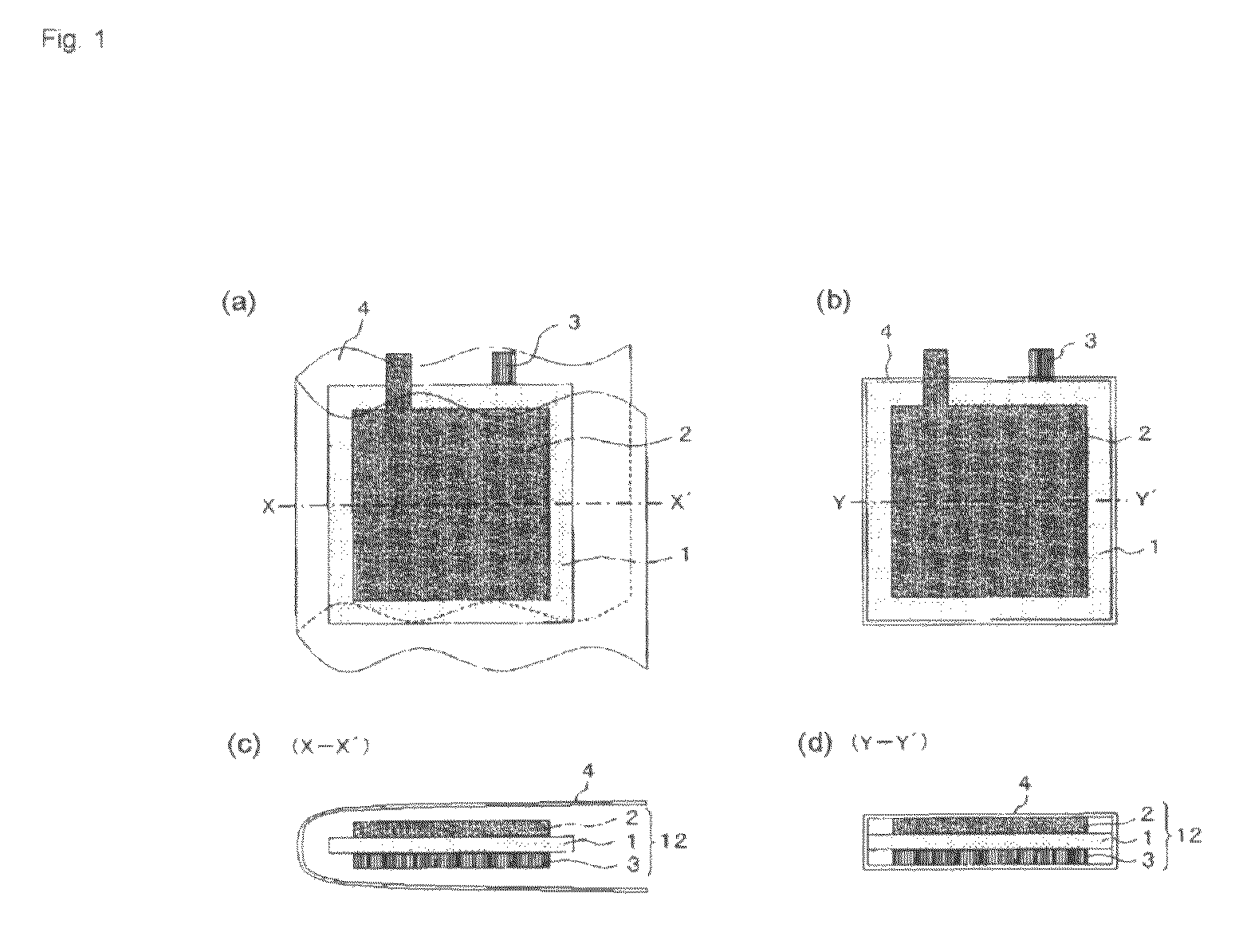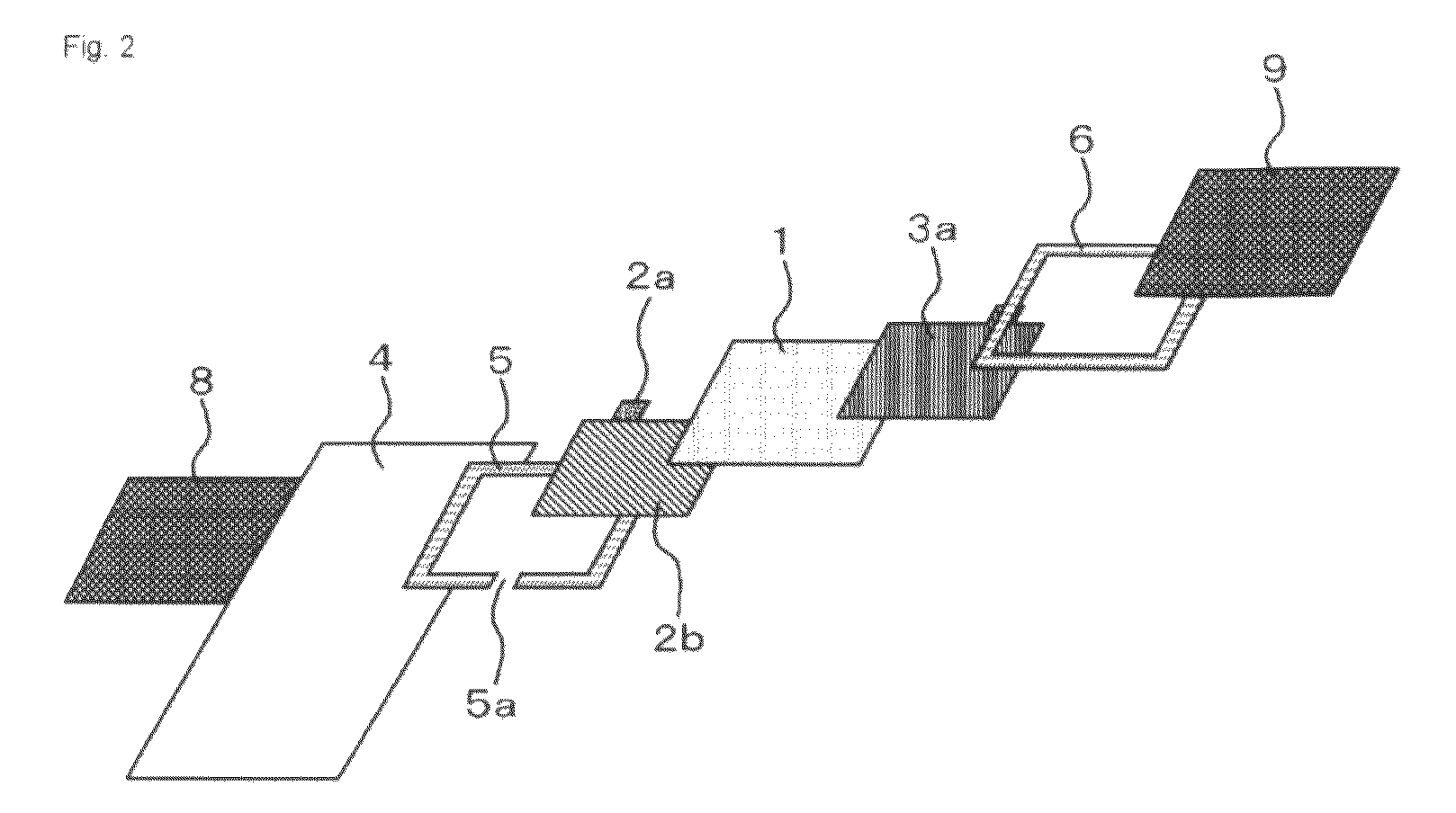Solid polymer fuel cell
a fuel cell and polymer technology, applied in the field of solid polymer fuel cells, can solve the problems of reducing the generation capacity and generation efficiency, reducing the output, and reducing the output, so as to reduce the number of components, reduce the size and weight of the fuel cell, and improve the productivity
- Summary
- Abstract
- Description
- Claims
- Application Information
AI Technical Summary
Benefits of technology
Problems solved by technology
Method used
Image
Examples
example 1
[0063]Hereunder, a solid polymer fuel cell according to the example 1 of the present invention will be described referring to a specific example. The single cell type solid polymer fuel cell shown in FIGS. 2 and 3 was made up through the following procedure (Ref. FIGS. 6(a) and 6(b)).
[0064]To form the cathode 3, firstly catalyst-carrying carbon fine particles, containing 55 wt. % of Pt fine particles of 3 to 5 nm in diameter in carbon particles (Ketjen Black EC600JD from Lion Corporation), were prepared, and an appropriate amount of 5 wt. % Nafion solution (Article No. DE521, “Nafion” is a registered trademark of E. I. du Pont de Nemours & Company (Inc.) was added to 1 g of the catalyst-carrying carbon fine particles and stirred, to thereby obtain a catalyst paste for the cathode (corresponding to the cathode catalyst layer 3b). The catalyst paste was applied to a metal porous base 3a at a rate of 1 to 8 mg / cm2 and dried, thus to make up the cathode 3. For the porous base 3a, a meta...
example 2
[0072]Hereunder, a solid polymer fuel cell according to the example 2 of the present invention will be described referring to a specific example. The solid polymer fuel cell of the serial unit structure shown in FIGS. 4 and 5 was made up through the following procedure (Ref. FIGS. 7(a) and 7(b)).
[0073]Firstly three pieces each of anodes 2 and cathodes 3 according to the example 1 were prepared. Then a film of Nafion 117 from DuPont was prepared as the solid polymer electrolytic membrane, in the size of 15 cm×5 cm and thickness of 180 μm. Regarding the solid polymer electrolytic membrane 1, the anode 2, and the cathode 3, the three anodes 2 were placed on one of the faces in the thickness direction of the solid polymer electrolytic membrane 1 such that the respective porous bases 2a were exposed as shown in FIG. 5, and such assembly was hot-pressed. In doing so, a positioning frame was employed on the solid polymer electrolytic membrane 1 so as to prevent the adjacent anodes 2 from b...
example 3
[0078]Hereunder, a solid polymer fuel cell according to the example 2 of the present invention will be described referring to a specific example. The single cell type solid polymer fuel cell shown in FIG. 3 was made up through the following procedure.
[0079]Firstly the MEA 12 (including the spacers 5, 6) was made up through a similar procedure to the example 1. Here, in the example 2 a polypropylene porous material (rectangular frame shape, outer size 45 mm, thickness 0.5 mm, width 5 mm, and porosity 50%) was employed as the spacers 5, 6.
[0080]Then the MEA 12 with the spacers 5, 6 attached thereto was enclosed in the gas-liquid separation membrane 4 with folding portions formed along the three sides so as to serve as the adhesion margins 4a (FIG. 8(a)) as shown in FIG. 8, and the adhesion margin 4a was folded toward the spacer 5 on the side of the anode 2, and the polyimide-based adhesive was then applied to the adhesion margin 4a and the assembly was sealed by thermo-compression bon...
PUM
| Property | Measurement | Unit |
|---|---|---|
| porosity | aaaaa | aaaaa |
| diameter | aaaaa | aaaaa |
| thick | aaaaa | aaaaa |
Abstract
Description
Claims
Application Information
 Login to View More
Login to View More - R&D
- Intellectual Property
- Life Sciences
- Materials
- Tech Scout
- Unparalleled Data Quality
- Higher Quality Content
- 60% Fewer Hallucinations
Browse by: Latest US Patents, China's latest patents, Technical Efficacy Thesaurus, Application Domain, Technology Topic, Popular Technical Reports.
© 2025 PatSnap. All rights reserved.Legal|Privacy policy|Modern Slavery Act Transparency Statement|Sitemap|About US| Contact US: help@patsnap.com



